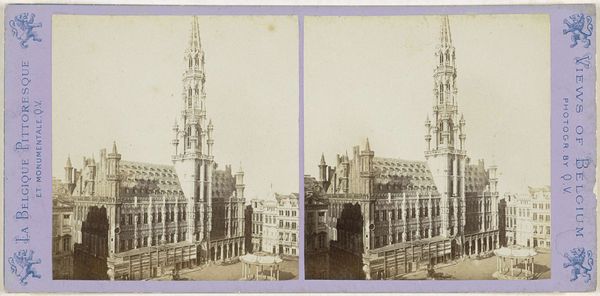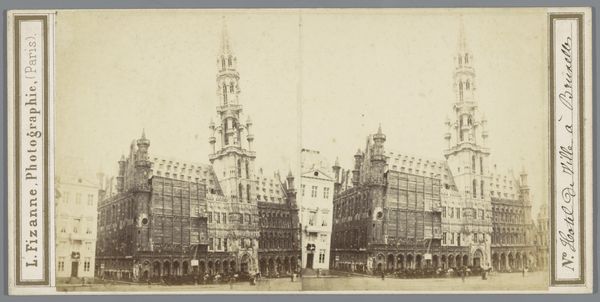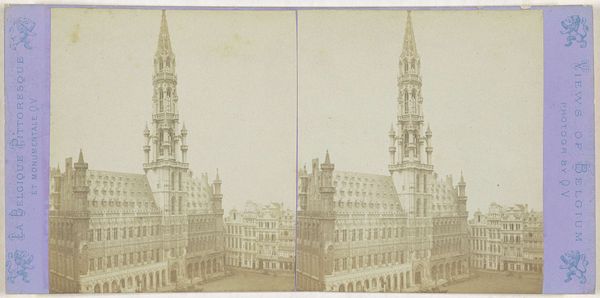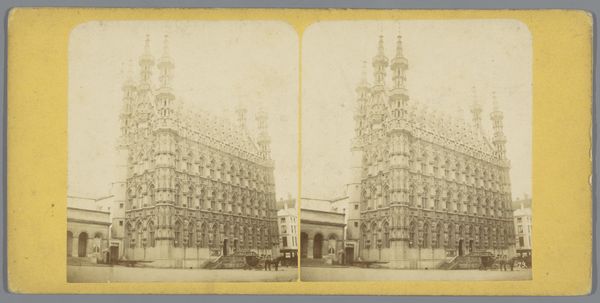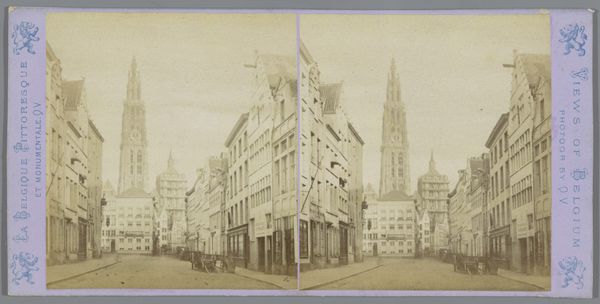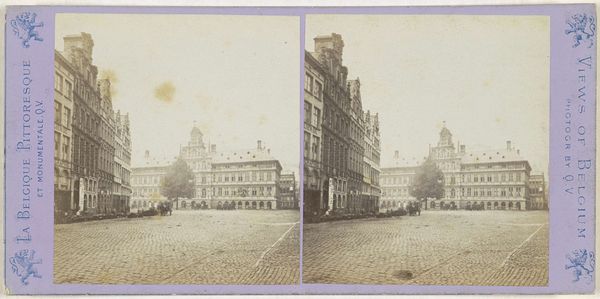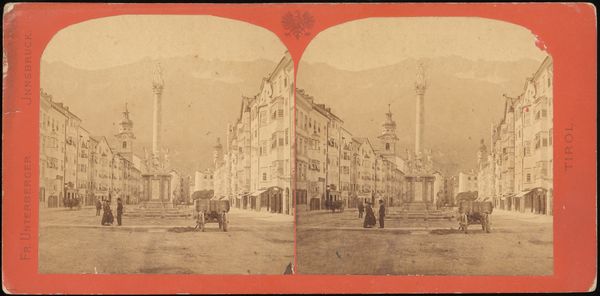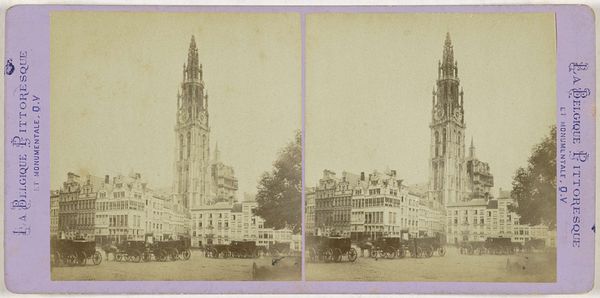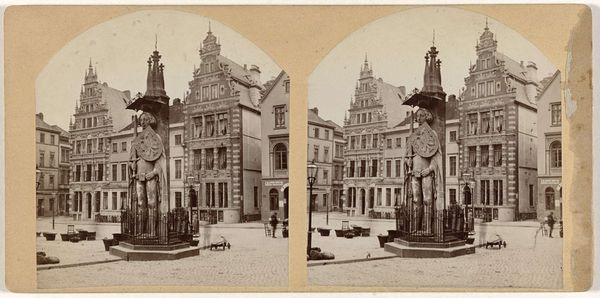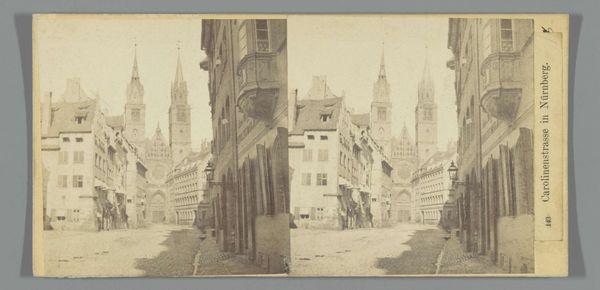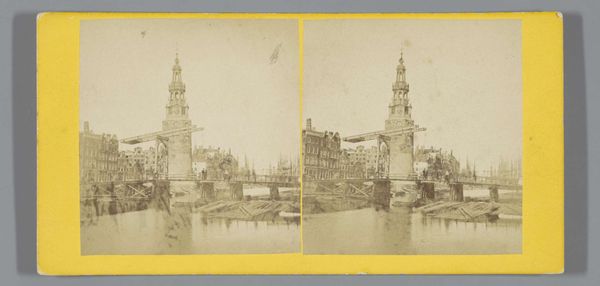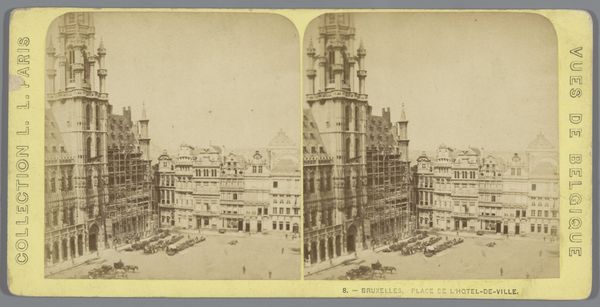
print, photography, albumen-print
# print
#
photography
#
coloured pencil
#
cityscape
#
albumen-print
#
realism
Dimensions: height 86 mm, width 175 mm
Copyright: Rijks Museum: Open Domain
Editor: This albumen print, "Stadhuis van Leuven," was created between 1866 and 1870 by Jules Hippolyte Quéval. The composition feels incredibly intricate. I'm really struck by how the building dominates the frame. What elements of the visual structure do you find most compelling? Curator: I am drawn to the interplay between the texture of the architecture and the surface quality of the albumen print. Observe how the linear projections of the gothic architecture contrast against the planes and masses. Consider also the subtle tonalities achieved via albumen; note how the range evokes atmospheric perspective to suggest depth. Editor: So, you're saying it's less about the subject itself, and more about how the artist manipulated the medium and composition to create a sense of depth and detail? Curator: Precisely. Note the deliberate choice of vantage point and its impact on the two-dimensional design. How does the camera angle affect our perception of the architectural mass and intricate detail, particularly its orthogonals and their convergence? Editor: I see what you mean. The perspective emphasizes the height and detail. What would you say is the impact of creating the photo as a print? Curator: A photograph transformed into a print transcends its initial form and materializes as a lasting impression on the viewer. Note how the two architectural depictions emphasize line, surface, light, and form that might otherwise escape immediate perception. Its existence in the gallery engages us with the tactile surface that encourages viewers to experience new depths beyond traditional notions and impressions of space in a stereographic form. Editor: This really shifts my perspective. I was so focused on the building, but now I see the photo as a deliberate artistic act through composition. Curator: Indeed, understanding the inherent visual structure allows us to move beyond representation towards an engagement with the art on its own terms, recognizing the deliberate interplay of media and process, surface and composition.
Comments
No comments
Be the first to comment and join the conversation on the ultimate creative platform.
